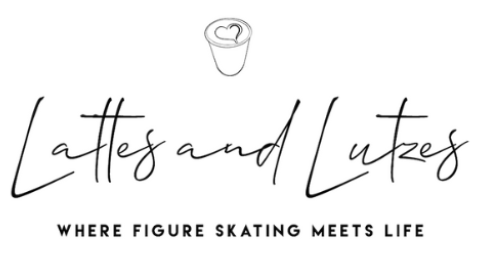
Along the Way: Once you progress beyond group lessons, you’ll need a private coach. But there are still ways to save. If you have a friend at a similar level, ask the coach about semi-private lessons to share the cost. Another option is to lesson on half-sessions (25-30 minutes) instead of full sessions. Communication with your coach is key – ask about the best way to focus on specific skills or program run-throughs during these shorter lessons. This way, you can tailor your warm-up beforehand and maximize your lesson time. Also, look for workshops, seminars, or specialty group classes like edge classes, which often cost less than private lessons and include ice fees.
EQUIPMENT
Starting Out: If you’re trying skating for the first time, consider taking a couple of lessons in rental skates to see if you like the sport before buying your own. After that, you’ll need your own skates since rentals aren’t designed for learning actual elements. (more on that here) Your first pair doesn’t need to be expensive however I would recomend a trusted skate brand like Riedell, Jackson, or Edea, and don’t shy away from used skates to save money. You will likely progress out of this first pair relatively quickly as your skills improve.
Along the Way: Saving on equipment gets trickier as you advance and need specific gear, but good care can extend the life of your skates. Dry them thoroughly between sessions and change the laces often. (more on that here) Buying used skates is another way to save, especially if you’re switching brands. For example, buy a used pair of your considered brand online for $50-$100 to see if you like them before investing in a new pair (this pair doesn’t need to last years). This is very common with skis, where you can rent a demo pair for a higher fee to get a feel for them. Another option is to ask your skate technician if they have any slightly used skates or blades that didn’t work out for someone else.
ICE TIME / PRACTICE
Starting Out: For extra practice between lessons, public ice sessions are perfect and cost nearly half the price of a freestyle session. Everyone skates in the same direction, making it easy to navigate. Check your rink’s rules, as some may not allow jumps or spins during public sessions or in designated areas only. These sessions are great for learning edges, turns, and crossovers. If you can, be flexible, a Saturday afternoon session will be way more crowded than an early morning one.
Along the Way: As you progress, freestyle ice sessions become necessary, but there are still ways to save. Contract ice or purchase a punch card to lower the cost per session. If you don’t see these options, ask your rink. I find these options don’t always make it onto the rink’s website. If you can be flexible with your schedule, look for quieter sessions (typically early in the morning or later at night) to help maximize what you can accomplish per session. Public sessions can still be useful at this stage for practicing edges, turns, and figures, or when breaking in new skates.
FITNESS / OFF-ICE TRAINING
Starting Out: At first, you might not need much off-ice training, but this sport requires flexibility, mobility, and strength. Consider adding exercises that incorporate these to your regular workouts. Working on spins and turns with an off-ice spinner can also be very helpful, as it slows down the element, giving you time to think about positions and arm placement.
Along the Way: As you advance, look for group fitness or jump classes specific to skating. Post-pandemic, there are many online options, often less expensive than in-person classes. Make sure to vet the training source, preferring actual coaches over social media influencers.
OTHER IDEAS
Record Yourself: Most of my skating practice is solo, with a couple of lessons per week. Recording myself has been invaluable. I use a Pivo Pod because the camera will follow me (AI has come to the ice rink), but even just propping your phone up against your coffee cup on the boards works. Reviewing the footage helps you verify if what you feel aligns with what’s actually happening.
Watching: Watching other skaters can also be a great learning tool. I often observe high-level skaters during their lessons or warm-ups. If your rink doesn’t have many high-level skaters, volunteer at a competition to watch and learn from others. You can pick up helpful warm-up techniques and training tips this way.
I hope you found these budget-friendly figure skating ideas helpful. Don’t forget to share your ideas in the comments below.

Love all the tips! Will you get into saving & on outfits hat another time? Good advice to get folks in the door at the boards!’
Great idea for a future post, thanks!
Good tips/information.